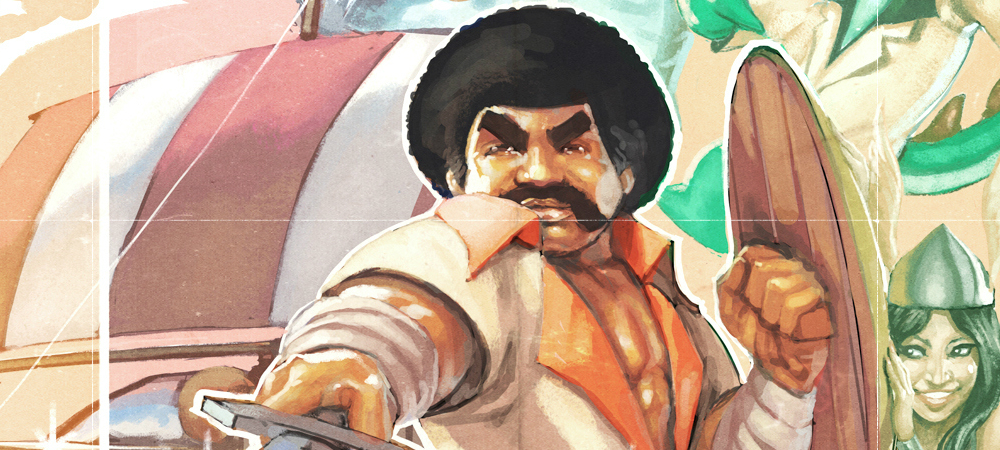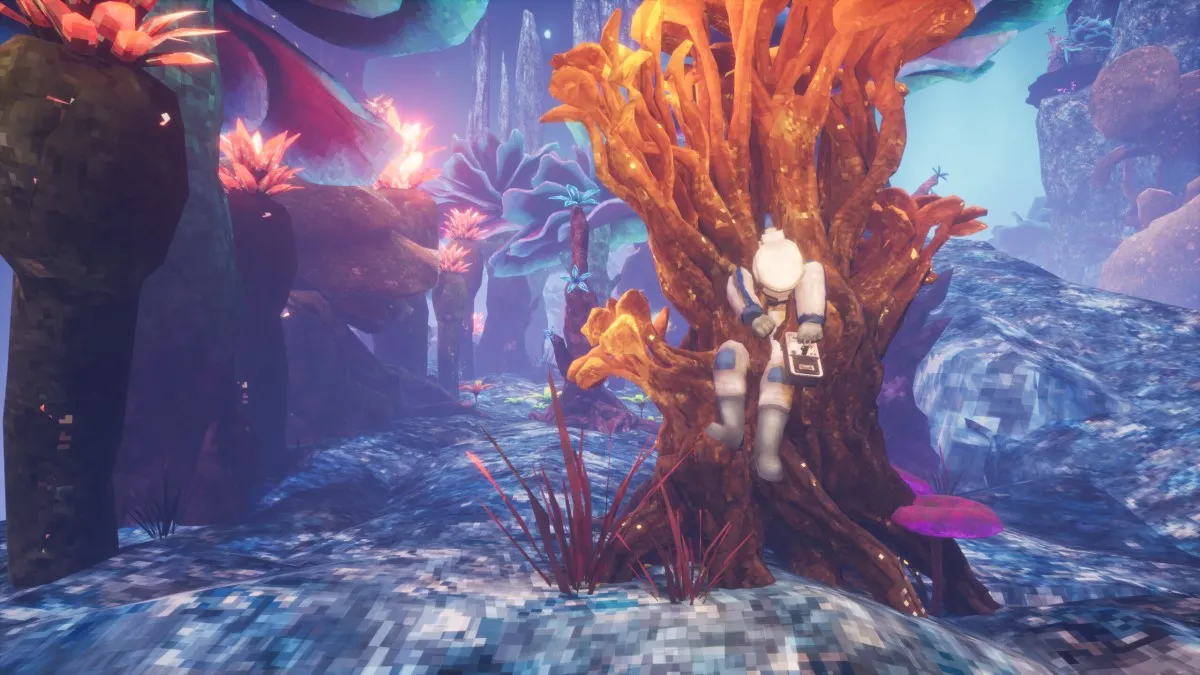Fjorgettable
Ouya users have not had a lot to be excited about for a while now. Excepting a few titles like Towerfall, there is not much worth owning on the microconsole, and especially few games that are not available elsewhere. As one of the more hyped titles, Airtight Games’ Soul Fjord was looking like it could be a good reason to own an Ouya.
The elevator pitch is great. Soul Fjord is a rhythm-based, hack-and-slash roguelike with a truly unique setting that crosses 1970s funk and 13th Century Norse mythology. Protagonist Magnus Jones has to fight for his right to party after being denied access to Valhalla. Unfortunately, unlike Jones’s expertly coiffed afro, Soul Fjord falls flat in its execution.

Soul Fjord (Ouya)
Developer: Airtight Games
Publisher: Airtight Games
Release: January 28, 2014
MSRP: Free, with microtransactions
To start on a positive note, the strange hybrid setting is fantastic. It seems like a completely random combination, but mixing ’70s soul with Norse mythology is just silly enough to work. It helps that it is supported by some genuinely funny writing, where equippable items have Scandinavian-sounding names and descriptions, but are often just rudimentary bludgeoning tools like stop signs or keg hammers. Heck, there was a loading screen or two that made me laugh, just imagining this Shaft-like figure giving advice for surviving the trip up Yggdrasil.
For the most part, the presentation is pretty decent as well. Character art is sharp, animations are smooth, and the funk soundtrack that changes from level to level is sufficiently funky. There are effects that reproduce the visual artifacts found in 1970s films, and while they fit the theme well enough, they do start to wear thin after a few sessions.
In theory, Soul Fjord could be fun to play. Jones has two basic attacks and a block, and when he hits enemies, numbers pop out of them until they die. The unique element of combat here is that players can deal (or block) significantly more damage when attacking (or defending) to the beat of the music than if they were to mash buttons.
One problem that arises is in the choice of the funk soundtrack. Regardless of what the music is doing, attacks are augmented when performed on the downbeats. By the nature of the genre, the music is very often syncopated; it specifically emphasizes notes in between the beats during certain sections. What results in these cases is rhythm gameplay that relies more heavily on the visual cues than the audio cues. Thankfully, this is not the case for every song in the game, but it is a huge design misstep with those songs that produce this effect.
The other big issue with the combat, even when the music has a heavy beat to follow, is that it is often slow and dull. Enemies will only attack on the beat, and early in the game their attacks are so infrequent that it is better to ignore blocking entirely and always go for the kill. Each weapon has two unique combos, so carrying around one weapon for a while means pressing the same sequences of buttons, over and over.
Getting to the combat is also a pretty trite affair. Enter a room. Kill all of the enemies. Go to the next room. Repeat. There are a few points of interest that can be found randomly, like rooms filled with spike traps or altars to the gods, but the procedural generation of levels is often squandered on areas with slightly different shapes that all play identically to one another.

Soul Fjord is a free-to-play game, and it comes with all of the trappings of that model, for better or for worse. As a game with roguelike elements, players do not keep items from one play to the next, unless those items are “Soul Bound.” Items that are randomly dropped or purchased with in-game gold can be manually Soul Bound by spending platinum records, Soul Fjord‘s premium currency. Treasure chests can also be opened for a few records, and any items found in this manner are automatically Soul Bound.
Some modicum of persistence in games that otherwise adhere to the roguelike tenet of permanent death is fine, and has even been done quite well in games like Risk of Rain or Desktop Dungeons. It just feels a little strange in Soul Fjord that the persistence is optional and tied to spending real money to maintain it. It feels especially strange in a hack-and-slash game to find a rare weapon or piece of armor but only be able to use it once without paying extra.
However, the impression one gets of the Soul Bound system is heavily dependent on perspective. Rather than thinking of Soul Fjord as a Diablo-style loot fest that is hindered by mandatory microtransactions, if it is viewed instead as a roguelike that is enhanced with persistence through optional microtransactions, then it stings a bit less. Indeed, the game can be played and theoretically completed without spending a penny on it.

That said, it would still require most players several playthroughs to gain the skill necessary to make it through to the end without starting with the most awesome weapons, and the gameplay is just not entertaining enough to support more than one or two runs. Though there are only nine levels, and each lasts between five and fifteen minutes, Soul Fjord was already repetitive and boring by the end of the second attempt.
Soul Fjord started with a good idea, and even has a few redeeming qualities, but in the end, it is just too dull to be enjoyable for longer than a few minutes. The free-to-play aspects don’t ruin the experience, but they don’t particularly help it either. If nothing else, Ouya owners should probably give this a try since it costs nothing upfront, but this is not the system savior that we have been hoping for.





Published: Jan 28, 2014 07:00 am